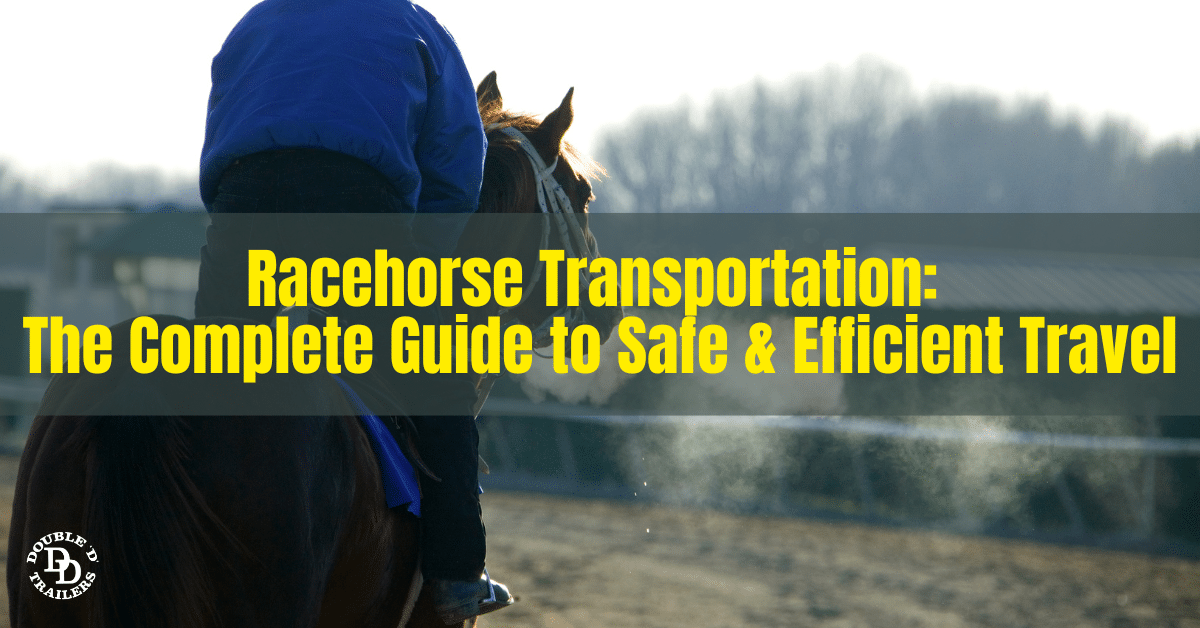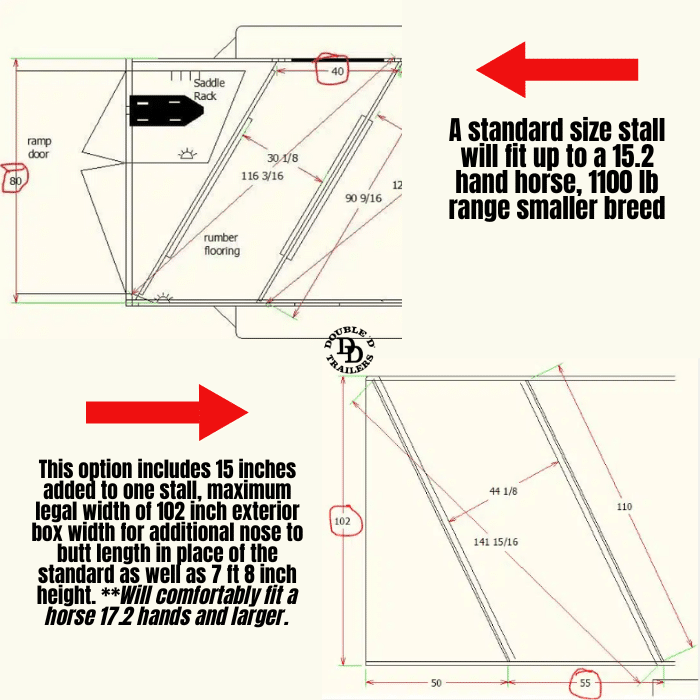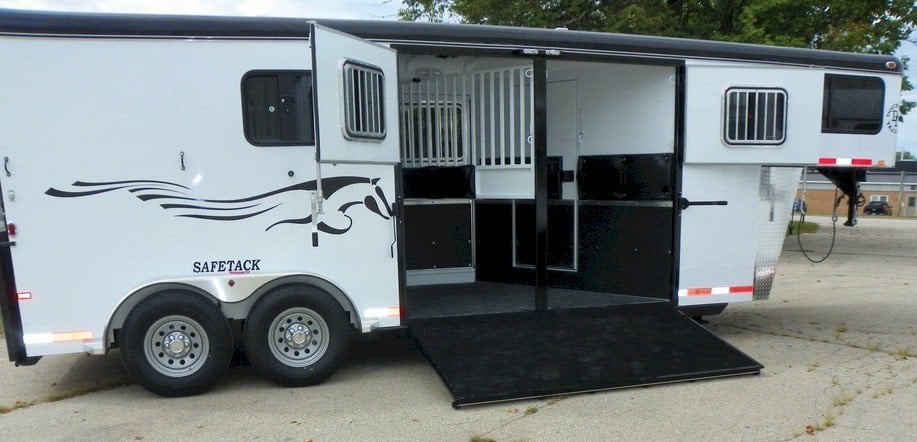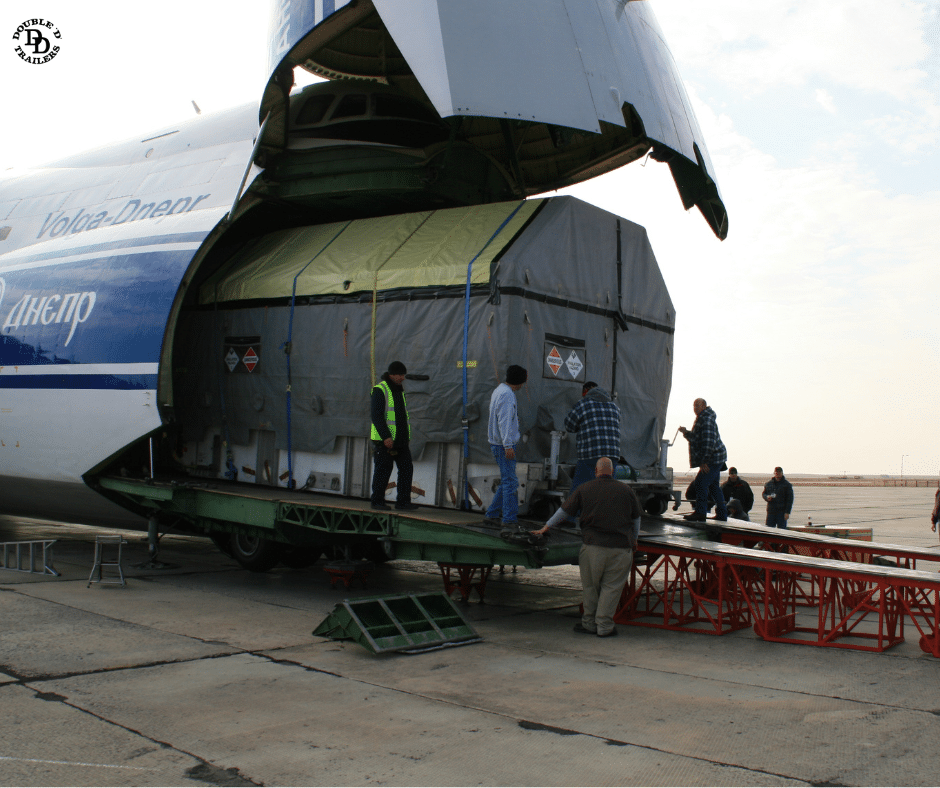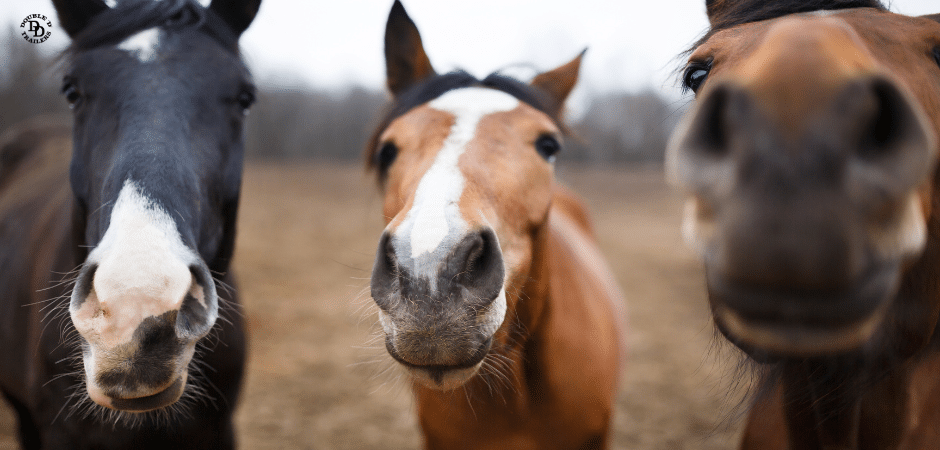Racehorse Transportation: The Complete Guide to Safe & Efficient Travel
Horse racing is a challenging field requiring much effort from horses and humans. This fast-paced environment leaves no room for error, hence the key role of racehorse transportation. This part of the horse racing equation directly affects horses’ performance and health, meaning that trouble-free hauling is always a must, although it’s easier said than done.
Safe and efficient racehorse transport requires meticulous planning and preparation. To pull it off, you have to blend experience, expertise, and proper equipment. In today’s article, you’ll learn about the methods for transporting racehorses, the costs involved, the dos and don’ts, the equipment required, and the critical factors that outline horses’ safety and well-being during transport.
What are the primary methods for transporting racehorses to competitions?
Racehorse transport depends on plenty of aspects: number of horses, destination, terrain, timeframe, and more. This is why different ways to transport racehorses exist - road transportation (the far more common one) and air transportation. Both require adequate preparation and compliance with various standards, rules, regulations, and advisories such as the Transportation Welfare Guidelines of the Horse Welfare Committee (HWC), part of the International Federation of Horseracing Authorities (IFHA) which prioritizes the welfare of Thoroughbred horses.
Road Transportation
Road transport of racehorses such as Thoroughbreds often seems to be much easier and straightforward than it actually is. When it comes to racehorse transport, things can get trickier than usual. For starters, you need specialized horse trailers for racehorses, as a regular model just won’t get the job done in almost all cases.
Specialized Horse Trailers for Racehorses
Specialized racehorse trailers differ from regular models in size and features. Since most racehorses are thoroughbreds, a properly sized trailer should comfortably accommodate horses up to 17 hands.
Features and Benefits
Except for extra stall space (wider and longer individual stalls) and additional headroom, racehorse trailers are designed to ensure maximum safety and comfort for the animals because even the slightest rise in stress levels or a small injury can eliminate them from participating in the upcoming event. Therefore, racehorse trailers come with features that regular models most often lack, including
- Air conditioning - a must-have for precise climate control inside the trailer
- Padded stalls (chest and butt bars) - the best way to provide extra protection against bruises and other injuries
- Insulated and padded walls - solutions such as the Double D Trailers SafeKick Wall System provide extra insulation that reduces outside noise and prevents injuries resulting from stall kicks
- Welcoming interior - light-colored walls, plenty of windows, wide loading/unloading area
- Non-slip floors - essential for providing enough grip and prevent slipping. The composite Rumber flooring is one of the best examples
- Monitoring system - adds another layer of safety by allowing handlers to keep an eye on the horses between regular stops
Thoroughbred Trailers
Thoroughbred trailers comprise all the features of specialized racehorse trailers listed above. Most often, they allow for a “walk-on, walk-off” loading and unloading pattern. Ideally, trailers designed for hauling competition horses allow for both travel layouts - forward-facing and reverse load.
Finding a trailer that offers wide, long, and tall enough stalls alongside enough space for a dressing room, storage, and tack compartment that’s also feature-rich and dependable is no easy task but brands such as Double D Trailers manage to pull it off without any compromises. But there are other aspects to consider when it comes to safe racehorse transport, such as the human factor and the applicable requirements and regulations.
Experienced Drivers and Handlers
Racehorses are used to a specific lifestyle and extra care and attention by trainers and handlers. Therefore, the safest bet when transporting Thoroughbreds or other racehorses would be to be checked upon and cared for by either the same people or other professional handlers who are equally experienced with competition horse breeds.
Such professionals would provide the best care and allow for humane, perfectly timed treatment and prevention of injuries or signs of health issues. Relying on professionals for horse transport or consultation on the matter can help horse owners and handlers understand and apply various safety protocols and thus minimize health and other risks.
Regulations and Safety Compliance
Road transport of racehorses should be compliant with numerous laws, regulations, and guidelines applicable in the relevant countries or states. The array of factors and considerations includes
- Permits and licenses when and if applicable (professional driver’s license or a company license for horse transport, etc.)
- Safety checks of the tow vehicle and trailer’s systems (safety latches, lights, braking system, rims and tires, etc.)
- Pre-travel health check of the horses (hydration levels, fatigue, signs of distress, etc.)
- Confirmation of the tow vehicle’s compatibility with the trailer (load capacity, tow capacity, tongue weight capacity)
- Confirmation that the trailer meets all requirements )proper ventilation and insulation, wide, non-slip loading doors, ramps, stalls, safe partitions, etc.)
Air Transportation
More than eight hours of continuous travel can increase health issue risks drastically, meaning that it’s not recommended to keep a horse on the road for longer, even if you don’t skip all frequent stops and checks. This means that air travel is a good alternative in some cases. When it comes to international equestrian events and tournaments, it most often remains the only possible option.
Using air cargo services for racehorse transport only makes sense if it significantly shortens travel time. Therefore, flying from the West Coast to the East Coast of the United States is the far better solution, but heading from Northern to Southern California, for example, would take about the same time to haul your horses by air or road transport.
Cargo planes use the so-called “air stables” to accommodate horses safely and comfortably during flights. These are more or less cargo containers mounted on special pallets. They remotely resemble horse trailers without frames that are securely placed in the aircraft’s cargo area.
While there are specialized racehorse transport companies, most air cargo companies would transport horses when booked in advance. With racehorses, bigger stables would be the best option, hence the extra 1 1/2 stable option that provides more room for larger breeds.
How are racehorses shipped by air?
Thanks to the container’s design, horses are secured on the plane’s main deck. The staff most often loads them last and respectively unloads them immediately after landing to reduce stress as much as possible. Most container modules for air horse transport can fit up to three horses but racehorse owners prefer to hire a single container for each horse, thus increasing the overall comfort.
Any cargo plane’s loading system allows the horse container to be rolled and secured into its designated spot thanks to locking mechanisms. This protects the container and the pallet it’s sitting on from moving.
Prior to loading, several procedures and requirements must be cleared, including
- Documentation checks: USDA permits, customs documents, international health certificates and statements, and other paperwork is always needed before loading and taking off.
- Pre-flight veterinary checks: Veterinary checks are not just a good idea - they’re required by law when it comes to international horse travel. Depending on your location and the desired destination, these requirements could be several at a time.
- Quarantine requirements: Before an overseas flight, you will be required to leave your horse at a USDA-approved facility for a required quarantine period of up to 30 days. When it’s time to return, horses most often endure a three-day quarantine period during which they pass through veterinary checks, such as blood tests, a Coggins test, and other health check-ups. Some cargo flights also require several hours of pre-flight quarantine.
- Experienced equine handlers: During travel, horse owners and handlers are usually seated near the cargo area where their horses are located. It’s essential to perform frequent health checks while in mid-air to avoid major issues.
How much does it cost to transport a horse across the US?
Horse transportation costs for interstate or cross-country routes depend on several factors
- Type of transport (road or air)
- Number and size of horses (determines the stall space needed)
- Specific preferences (monitoring system, accommodation for handlers and trainers, etc.)
- Distance, season, and timetable (road transport takes way more time in most cases)
Depending on the factors above and the requirements, needs, and preferences you may have, horse transportation costs may vary:
Road transportation: Being the most popular means of hauling horses, it’s the most affordable one, too, at least in most cases. It’s a safe option, given that all factors and risks are considered in advance. The final price is always based on additional considerations, such as layovers, weather conditions, horse-related specifics (constant need for a handler, extra-large size, etc.), preferred routes, and more. It also depends if you transport the horses yourself or appoint a professional company to take care of them. Therefore, costs can range between $1 and $3 on average.
Air transportation: This transport option is more expensive and harder to organize. Several additional factors can increase costs, such as availability of flights, convenient airport location, travel class, cargo container specifics, destination, and more. International horse transport can easily cost between $5,000 and $20,000 for a two-way ticket, not counting additional expenses such as required USDA certificates and tests that could set you back a couple of thousand dollars. Domestic flights can be a lot cheaper, though.
Choosing the Best Transportation For Racehorses: Key Factors To Consider
If you’re on the fence when you need to choose the more appropriate transportation method for your horse, start comparing factors - it’s the best way to solve such a dilemma. It all comes down to achieving the perfect balance between distance, travel time, costs, horses’ needs, and urgency.
Distance
Distance is typically the factor that weighs in the most when it’s time to decide. In most cases, the choice is obvious. If you only have a day’s worth of travel time by road, then air transport would neither be significantly faster nor cheaper. However, if you need to cover a thousand miles or more, this would equal several days on the road, which would not be good for your horses and you, and the extra costs related to layovers and fuel might not be worth it at all.
Travel Time
Distance is in direct correlation with travel time. The farther you need to transport your horses, the longer it would take. If time is of the essence and costs are not your primary concern, then horse transport by air is your solution, as long as you have access to a convenient airport and you found the right cargo company.
Cost
More often than not, transportation costs are the primary factor to consider when transporting your horse. When your destination is overseas, there isn’t really an option (except for the rare occasions where sea transport can work as an alternative solution) but you often have a choice - road transport. In most cases, it’s the more affordable option, although it could take longer.
Horse's Needs
Horses often have preferences and habits that handlers and trainers take into account. These preferences can be related to travel position, loading pattern, health condition, individual needs, and more. The safest and most comfortable transportation method is the one that complies with these specifics.
Urgency
When you’re in a situation where you can’t allow any delays, you’ll look for the faster option regardless of the price. In this case, you might still have a choice between transport by road or air, as long as both can work considering the destination in question.
Preparing Racehorses for Transportation
To prepare horses for any kind of transportation means, you should always start with making sure they’re in a health condition suitable for travel. You should also confirm that the horses are trained to endure hauling and provide all the necessary gear and supplies to ensure a trouble-free trip.
Pre-Transport Veterinary Check-ups
Even when not required by relevant and applicable rules and regulations such as the USDA certificates and permits you need to obtain before and after an overseas flight, it’s always crucial to perform a health check with the help of a vet. Confirming that your horse is capable of handling transport for as long as needed is always a priority. A veterinarian can quickly check the horses’ overall condition by assessing stress levels, checking blood pressure, confirming no respiratory issues are available, and so forth.
Acclimation and Training
If your racehorse has always been hesitant while on the road or even during loading, you should allow for an acclimation period. If the trailer is new to him, then it would take some time to get used to the surroundings. A bright, airy, light-colored interior with plenty of natural light coming in would be beneficial. Properly designed partitions that allow freedom of movement and do not isolate the horse by blocking his view are essential to have. Ideally, the amenities aboard the chosen means of transportation should allow for flawless air circulation and eliminate odors such as exhaust fumes. A fully controlled climate system that doesn’t allow the horse to overheat is another must-have. All of these features would allow the handler to comfort the horse faster and easier and achieve a state in which transportation would not cause issues.
Essential Gear and Supplies
Racehorse transport is all about achieving the ultimate safety and comfort and minimizing potential risks. This is perfectly doable but it takes planning, preparation, and making sure you have the essential equipment, gear, and supplies needed to guarantee you will meet these goals.
To be in control of every situation, frequent stops are not enough. A well-designed monitoring system using cameras inside the horse area will give you an important edge: you will be able to spot anomalies in the horses’ behavior and therefore prevent bigger issues that could jeopardize the whole journey.
To take things further, you could opt for a heart rate monitoring device that constantly shows if your horses are calm or anxious. You can also prevent overheating and fatigue by allowing horses to enjoy a well-ventilated interior. Providing food and water using all onboard conveniences will also help avoid dehydration and make sure your horses have the energy to endure standing inside a horse trailer or a cargo stall container for hours at a time.
Now that we've explored the preparation phase, let's delve into ensuring a safe and stress-free journey for your racehorse.
How to Ensure a Safe and Stress-Free Journey of Your Thoroughbreds to the Competitions
Reducing stress in Thoroughbreds and other racehorses during travel is a primary concern for all horse owners and handlers. Ensuring their safety and comfort is the best way to achieve it. To make it happen, they should pay attention to several conditions and requirements such as loading patterns, consistent environment from start to finish, post-transport care, and recovery period.
Loading and Securing Racehorses
Loading and securing a racehorse in place can be straightforward if you’re provided with the best conditions possible, regardless if it comes to horse trailers or cargo plane decks. Horses always love a wide, welcoming, unobstructed access that leads them to a wide, bright, and inviting area. When you add non-slip floors and other perks such as padded surfaces and ventilation systems, horses won’t find a reason to feel stressed or intimidated in any way. This is why minimizing stress during travel is directly related to comfort.
Maintaining Optimal Conditions During Transport
Since we mentioned comfort, you need to maintain it throughout the whole journey to avoid any health symptoms. Proper ventilation, air conditioning or other means of climate control, and sufficient hydration are essential. These factors outline the essential set of must-have options to significantly minimize health risks. You can always go further and use heart rate monitoring systems for precise care.
Arrival and Post-Transportation Care
As soon as the journey is over, you still have a lot to do as part of the horse transportation process. Unloading the horse isn’t the end, as you’d need to make sure the horse stretches his legs and gets comfortable with the surroundings, in case he will rest in a different place from the horse area he’s been traveling for hours. This will calm the horse down and help him recover. If the final destination is home, this process understandably takes less time.
Recovery and Monitoring
Allowing your racehorse to take all the time he needs to recover after hours of traveling is crucial. But you still need to monitor the horse’s behavior and vital signs while he’s resting. This will provide you with peace of mind that the horse endured transportation and arrived in peak competitive shape. Giving yourself time for observation will allow you to spot abnormalities that you might have missed during regular stops, such as minor injuries.
What are the possible problems with horse transport?
Horse transport poses several risks and can lead to a myriad of issues, all of which could be avoided thanks to good planning, preparation, and consistency. Potential health risks can be reduced or even completely removed by following the advice we shared earlier in this article.
Major problems that can occur during transportation include: erratic behavior, stall kicks resulting in bruises or other physical injuries, dehydration, nausea, heat stress, travel sickness, and more. Most of them occur due to lack of monitoring, exposure to dense, stall air, not enough space for head movement, lack of food and water, inexperienced handlers, inadequate loading conditions and stall size, and long hauls without frequent stops.
Regardless of the chosen transportation method, the duration of travel, or other factors, you are always better off sticking to the basic means of ensuring horse welfare during transportation: pre-travel checks, healthy and safe environment, stress-free loading and unloading, freedom of movement, and constant monitoring that continues even after you’ve reached your destination.
Our Commitment to Safe and Reliable Racehorse Transportation
You already learned why transporting racehorses to competitions and other events can only be done right when you consider several factors, terms, and conditions. Neglecting either of them could result in various negative outcomes that you don’t want to experience, therefore, every seemingly small detail matters. Safe loading and unloading means, pre-travel health checks, comfortable premises, adequate vehicles and equipment, quick access to the horses, and constant monitoring are among the key considerations to make regardless of the destination or the type of transportation. It’s the only way to guarantee horse welfare during transport.
If you need to appoint a professional transportation company to haul your racehorses, make sure it meets the requirements we mentioned in this article. Don’t forget to confirm it’s a properly licensed entity with a proven track record in this industry. You should also verify that the horse trailers used by the company are good enough for the job.
The perfect horse trailer for racehorse transport is almost always a custom-built model. At Double D Trailers, we specialize in designing and fabricating tailor-made horse trailers for our clients. Completely customizing any model from our current lineup from scratch to meet a client’s needs and preferences is possible and we do it all the time.
We can start by defining custom height and width to fit large Thoroughbreds or Warmbloods and proceed with choosing the floor plan and loading pattern. Then, you can opt for some of the numerous comfort and safety options we offer for a truly unique result.
Our handy online customization calculator is available for every current model. We can alter every corner of the trailer according to your taste and create your dream spec within a very reasonable budget. The secret? You only pay for the options and equipment you need - nothing more, nothing less.
Contact us for safe and reliable transportation solutions for your valuable racehorses.

